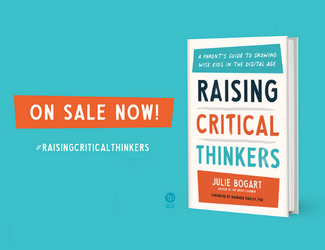Don’t Derail Thoughtfulness

The multiple-choice test ‘right answer’ thinking is what often derails thoughtfulness—evidence of caring about the question, not just surmising the answer a test-maker had in mind.
You’re in class. Teacher hands out the test. Hands on the clock tick. 50 minutes to answer 50 questions. Scantron hits your desk—ding!
What happens in your body? A thrill of adrenaline? Sweat?
You get to the end of the first question: four choices. You can’t decide between (a) and (b). Clock ticking. You can make good arguments for either of them. Clock ticking louder. You fill in one bubble, then erase it, and fill in the other. It’s hard to know which one is right. From one perspective, (a) makes complete sense. But you like (b) because it makes more sense to you.
Finally: you know! You know because you do one thought experiment to help you. You ask yourself, “What did my teacher have in mind when creating this question?” You stop consulting your own thoughts, ideas, and powers of synthesizing.
On you go—new method in mind. You won’t think about possible answers. Instead, you’ll ask “What’s the most likely answer the test-creator wanted me to supply?”
Goodbye critical thinking.
When we reduce learning to right answers alone, and decide whose right answers we must learn, and then put that right answer thinking under timed pressure, we eliminate an important force in our education: our own powerful minds!
Even math. Even spelling.
What would happen if your child could explain why they thought 7 x 8 was 54 or that “field” was spelled “feeled”?
How is it helpful to simply tell that child “You got it wrong?”
This post is originally from Instagram and @juliebravewriter is my account there so come follow along for more conversations like this one!
For more help, I’ve got a whole chapter addressing “multiple choice right answer thinking” and how it’s destroying our children’s natural capacity for wonder and intellectual growth in my new book, Raising Critical Thinkers.


















